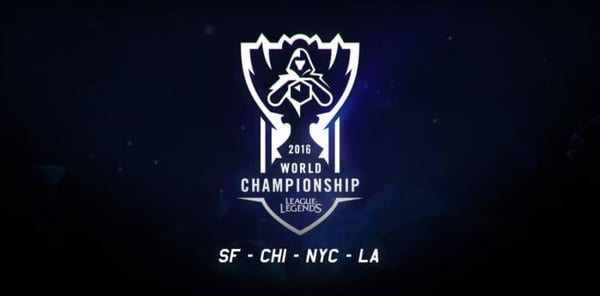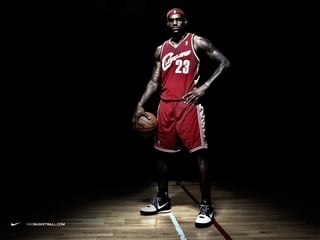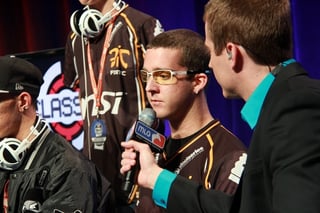Trending
Opinion: How will Project 2025 impact game developers?
The Heritage Foundation's manifesto for the possible next administration could do great harm to many, including large portions of the game development community.

Featured Blog | This community-written post highlights the best of what the game industry has to offer. Read more like it on the Game Developer Blogs or learn how to Submit Your Own Blog Post
Red Fox Insights found that the number gamers watching esports more than once a week in the US and UK was still relatively low - particularly in the UK. Discover how game brands are borrowing from other industries to improve esports engagement.

Esports is becoming increasingly popular, with viewership for major eventsoutnumbering major traditional sporting events like the NBA Finals or World Series clinches. However, Red Fox Insights’ Exploring the Esports Gamer report found that the number gamers watching esports more than once a week in the US and UK was still relatively low - particularly in the UK. Red Fox received over 8,000 responses from over 800 completed gamer surveys targeting an engaged gaming audience.
Do you watch esports more than once a week?
US: 22.39% said yes
UK: 13.69% said yes

In order to further drive engagement, improve esports, and increase viewership, gaming brands are looking to other industries for inspiration in both marketing and product design. The Gearing up for Gaming report by Red Fox Insights reveals how these brands are adapting strategies and learning to match esports’ breakneck growth.
We asked Travis Hezel, Global Director of Sponsorship at SteelSeries if his team draws inspiration from other sources. He responded, “We draw inspirations from a lot of different brands and a lot of different industries. Nike with basketball is obviously a big one from advertising.”
Nike manages to strongly associate itself with the world’s best athletes. For the pro-level gaming gear SteelSeries is known for, they've taken cues from relationships between brands and their stars. Consider the relationship between Lebron James and Nike in reference to spec vs functionality.
lebron-james-standing-nike-ad-wallpaper-e1426832671190.jpg
When Nike is using Lebron to market, or win championships, they fail to mention the specific fabrics or composites that make up the soul of the shoes he wears. Instead they rely on associated success, and the fact that the shoes functionality has left Lebron’s skills unhindered.While not one to shy away from spec driven discussion, esports/game brands know advertising and growing esports has become more than specs. It becomes about constantly looking to “traditional sports brands and how they interact with their stars [players].” For SteelSeries, it doesn’t stop there. Travis continues by saying they’re always
“looking towards things likeskateboarding and extreme sports culture. Looking at things like music and the music industry...always drawing inspiration from anywhere we can.”
Inspiration from other industries ties into esport product design as well. During an interview with Red Fox Insights, Ujesh Desai, Vice President and General Manager of Gaming at Logitech G, was asked if they're inspired by other industries. He responded, “Absolutely, I’ll be the first to admit, we’re [learning and applying] what we’re doing from Nike and I’m proud to say that. We look at what they do with their Nike Sports Labs. Right around the corner, 10 feet from where I sit all day we have two glass fishbowls that the esports teams have access to.”
nike-research-lab.jpg
The glass "fishbowls" Ujesh is referring are 5v5 gaming spaces that professional esports teams have access to. The rooms are built to allow research, consumer insights and product teams to observe play sessions to better understand how gamers are competing and using gear.
Logitech G, and brands synonymous with esports, are becoming increasingly interested in sports science as well. Sports science can be described as a discipline that studies how the healthy human body works during exercise/activity.
Professional gaming teams work with scientists, doctors and researchers. They have access to psychologists who focus on the mental health of the team. The athlete focus that exists in traditional sports is now a part of esports. Ujesh explains,
“Esports teams sit down in morning with sport psychologists, they’ll do yoga, meditation, weight training and cardio then in afternoon they start scrimmaging.”
Good hand eye coordination, skill and reaction are important, but these sports science revelations show how mental toughness is a huge focus. Borrowing from other industries influences how brands are preparing for a new breed of esports competition.
GUNNAR eye wear has blended product and marketing approaches - creating a new category of accessory for the digital consumer. Much like consumers who gravitate towards other brands, esports players want to attach to things. GUNNAR President,Scott Sorensen identifies this desire, “You’re creating a statement when you get dressed in the morning. Fans of esports have fewer brands designed specifically for them.” 
GUNNAR
GUNNAR offers these consumers a solution, creating gear that enhances quality of play, while helping gamers identify brands that resonate with them. In order to reach and appeal to this group, Scott said “the most important thing is immersion. We’re part of this [esports space]. We support the industry, we support esports. As an insider, you know what matters to the groups that use your product, and have access to their feedback. There is no need to force your way into the market audience.”
Traditional sports offer template for success, but esports is plenty unique in its own right. CEO of Archon Gaming, Sebastian Park, noted during an Explaining the Esports Industry Panel at SXSW 2016,
“[Esports] is not an industry that needs to be modeled purely off existing sports. Why spend so much time shoehorning that old model. The reason why March Madness does so well - you invest in a brand, not an audience or demographic.”
In the early days, esports' struggled to maintain the attention of larger brands. Partners wouldn't support the space due to a lack of consistency. Now, the sustainability and predictably of events and locations makes it easier to draw big brands, promising consistent (growing) returns. In addition, esports' lack of focus on traditional broadcasting and fueled focus on streaming has unlocked and created an audience that lives online.
Understanding the strengths of esports, improving brands that promote esports, and adapting elements from other industries are necessary for continued growth.
Read more about:
Featured BlogsYou May Also Like